






|
2017 |
 |
 |
 |
 |
 |
 |
 |
|
Here are all three premium F/1.2 lenses by Olympus, including the two which were just recently annnounced. And, indeed, externally they seem to differ only in curvature of the front element.
| As expected, each has, in addition to weather-proofing, both Pro-series perks: a function button and the manual focus clutch (toggling between MF and AF by pushing or pulling the focusing ring). The only problem is the price, again identical for all three: $1200 apiece. Ouch.
| 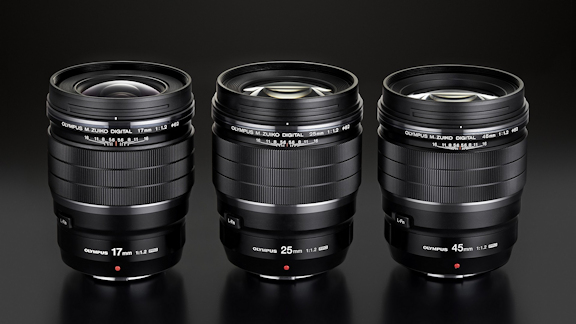
(Promotional image by Olympus) | |
|
Last night I posted the first full version of the GPD Pocket review, at long last (roughly) done. After more than three weeks, I can clearly say I do like this small wonder. I will be still working on that piece, as I can aleady see lots of things to add. This may take another month (or forever). I can already see a number of uses for this computer in my photography. This may deserve another article.
|
The GPD Pocket article is almost done; at least most of the technical information and its interpretation is there. I'm posting it now, so that it becomes accessible before Thanksgiving (really: the Black Friday). In the meantime, I will be still working on it.
|
It's been a busy two weeks. First, stuff at work — but this is done. Second, my new laptop just arrived and I'm still very busy setting it up, so that it works my way, not Mr. Gates' way (and, oh boy, do we differ on a number of issues, even if I like and respect the man).
I decided to get the GPD Pocket, developed in China (where else?) as an Indiegogo project. People were saying good things about it, and I also liked the specs (see the last item of my light laptop comparison).
| To save myself a $100 (compared to Amazon), I ordered directly from China, through a retailer named GearBest, who sell literally everything. If you need Long Free Part Afro Shaggy Curly Lace Front Synthetic Wig - BROWN ($69), don't look anywhere else .
| 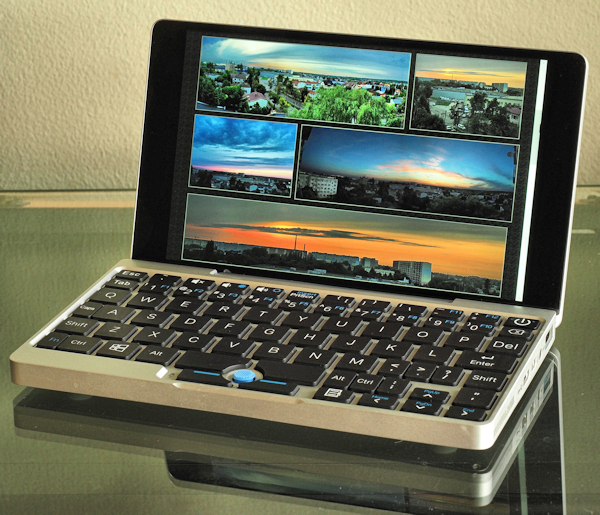
E-M1 Mk. II, MZD 12-100/4.0 Pro @47 mm
| I placed the order on the 17th, it was reported shipped from Beijing the next day, and then I haven't heard from my parcel until nine days later, when it was seen in Los Angeles, CA. It did not sit long there, leaving just after three hours, this time for Parks, AZ, then Froom, TX, Sullivan, MO, Genoa, OH, all in one-day jumps. That is already east of the Mississippi River, close to home. Now, only Fairview Township, PA, and Alethorpe, MD, and to Crofton, MD US Post Office (they took over from FedEx on the last stretch). The next day, November 4th, the USPS stuffs the parcel into my mailbox. Why am I going into all this trivia? Just to make a point that it took at least a dozen drivers (and/or pilots) to bring my stupid package from Beijing to Crofton. Just to show how globally intertwined our lives became. And now I'm having a field day with this little sucker. It is tiny (18×11 cm or 7¼×4¼"), a little bit chunky (19 mm or ¾"), and feels surprisingly heavy at 500 g (1.1 lb). That feel may be related to beautifully crafted, solid metal alloy body, which for many would be enough of a reason to buy the whole bloody thing. It is gorgeous. | ||||
|
So far, I like most (if not all) things about this device, but I'm still busy tweaking the system, installing the software I will need, and running it. Getting to know a computer requires more than running a few YouTube videos.
From other developments:
What I think is a nice addition to the new Picture Mode article: a small Image Flipper, allowing for critical comparisons between different versions of (usually) the same image. This works best in Chrome, Opera, and Vivaldi (all based on the same engine), as the image preloading option seems to be broken in the others, so some transition flicker shows.
Olympus Picture Modes Revisited — a new article on this subject, richly illustrated with pictures from the E-M1 Mk. II. Or, perhaps, rather a picture (singular), as all 18 examples are derived from just one raw image file, submitted to RGB conversion in various Picture Modes (and not only).
| See also the original Picture Mode article, updated as needed. That frame is shown at the right, after perspective correction and tonal adjustment, but that was applied to a JPEG produced in the Natural mode, no hanky-panky of any kind.
| 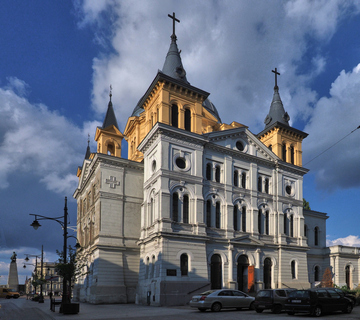
Olympus E-M1 Mk. II, MZD 12-100/4.0 @12 mm
|
This church in Łódź, Poland, is where the famous See the statue in the bottom-left corner? One of the side panels depicts George Washington; something quite unusual in a Communist country in the 1960's. | ||
|
This street scene from 1974 was shot in Dushanbe, Tajikistan, then a part of the Soviet Union. Only a few frames from that trip survived through all those years; you can have a look at them (monochrome) in the While this particular picture looks quite decent for its age, it took me close to half an hour of postprocessing. Some others took even longer; the ORWO transparency film does not age nicely. |
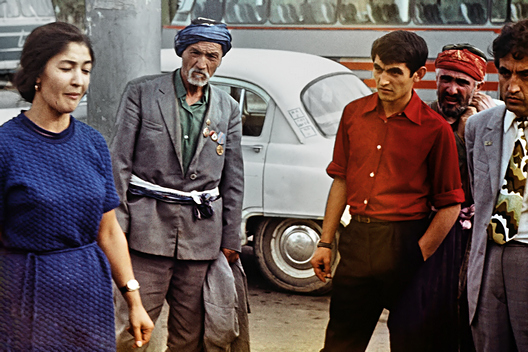
Soviet Start SLR with a 58 mm F/2.0 Helios-44 lens
| ||||||
|
My laptop computer is going to die any day now. For a few months I've been maintaining a Web page with a short list of possible replacements. This list was accessible by invitation only (you had to know the URL); after a cleanup I'm making it now visible from outside — so here it is:
|
Picture of the Week: San Juan, Puerto Rico. This was a rare case of just walking into something perfect: an ideal symmetry, broken ever so slightly, just enough to make it non-trivial.
|
I like this image a lot, and it submits itself very nicely to manipulation, therefore I used it as a demonstration case for the new, small article:
| 
Olympus E-30, MZD 12-60/2.8-4.0 @51 mm
| Yes, at the moment PSP is my principal image editor, as buggy as it is. (The last reasonably clean version was v2 of 24 years ago, when PSP was still an intellectual property of JASC Software. Corel is the last company in the world whom I would hire to do any software maintenance. Look what they did to Photo-Paint.)
The Sunset Panoramas article was largely rewritten. | |||
|
Back in Maryland, having crab cakes tonight.
The last morning before leaving Poland I was able to get a few shots of downtown Warsaw skyline as seen from the seventh floor of a hotel near the airport. |
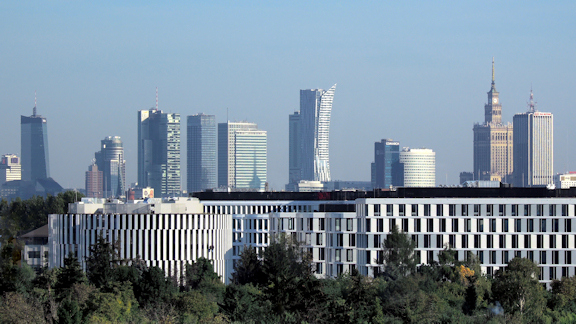
Olympus E-M1, MZD 12-100/F4.0 @100 mm
|
|
The cake-shaped monstrosity at the right is Uncle Stalin's "gift" to People's Republic of Poland, a stark reminder of four decades of Soviet domination. The tall tower in the center (Warsaw Spires) may come handy for making a post-apocalyptic movie one day; it looks like taken from Boston in Fallout 4. Unfortunately, I had to shoot through a window pane. This may be not obvious in screen- or print-size magnifications, but viewing the images in 1:1 pixel scale leaves no doubt. Now, a disclosure. This is not a straight picture: I did some cloning and object removal, mostly to get rid of a street lamp, blocking the gap between two towers in the center. That stupid lamp disturbed me a lot; I just had to remove it. Here is a screen-sized version with the lamp not removed; you may compare both and judge for yourself. Just posted: a small, semi-technical article on Sunset Panoramas, applicable to any camera, but with some extras for Pen and OM-D users. | |
|
New Gallery page: Urban Sunsets, all shot from the same spot, a seventh-floor balcony of our Polish apartment in Łódź.
In most of those pictures I'm opening the shadows, which usually lose all detail in sunset pictures. Sometimes I use the HDR mode to do that, sometimes — just some tweaks of raw-to-RGB conversion in Olympus Viewer. Actually, I'm half-done with a technical article on the subject; watch this space. | |
|
Oprema Optik (people behind the 75 mm Biotar resurrection campaign) started a new project, this time to recreate the 58 mm F/2 Biotar lens. This one is hosted on Indiegogo, and the new/old lens will cost $900 or so (shipping September, 2018).
The μFT mount is not listed as available for the 58 mm version, but I expect it to be added — as it was the case with the 75 mm Biotar.
The original 58/2.0 Biotar was the "better" lens often bundled with Exakta cameras (see Besides, I don't like my intelligence being offended with statements like these: — Like no other lens, the Biotar can capture emotions, feelings and moods. — It produces absolute sharpness and a flattering bokeh in any situation. — Some modern lenses, are pretty much optimized to re-create reality but not so much magic and creative expression. Have you ever taken pictures of a very emotional situation - but the pictures didn't reflect the intrinsic mood of that special situation because the images were too �real�? | |
|
Picture of the Week: Piotrkowska Street, the main street of my original home town of Łódź, Poland.
Having lived there until 1984, I still come to visit a few times a year, always finding the city better-off, prettier, and more attractive. |
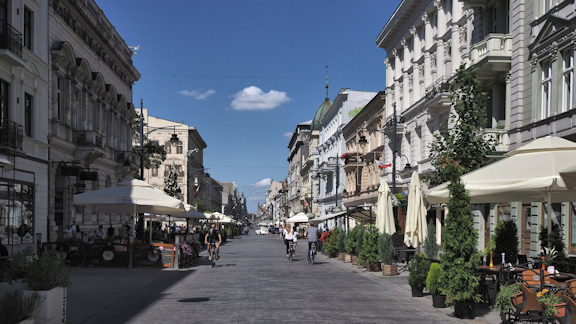
Olympus E-M1 II, Leica DG 8-18/2.8-4.0 @18 mm |
|
This street, now turned into a foot/bicycle promenade, was built mostly in late XIX and early XX century, when Łódź (inhabited by Poles, Germans, and ethnic Jews) was a site of an unprecedented boom in textile industry (like the silver rush in the American West). Every summer, the first mile of the street turns into one huge open-air café; one of the more enjoyable places of this kind I've seen. The pre-release E-M10 Mark III preview is done: ready, annotated, hyper-linked and whatever. Being based on manufacturer's specs, it is also, I suspect, full of omissions and factual errors; I will keep updating it as more information becomes available. In the meantime, Olympus pushed the market availability date to the end of September. Update: the E-M10 III Instruction Manual is already available. | |
|
Picture of the week: my wife, an avid wild-mushroom picker, dragged me out into the woods yesterday. I managed to get five or six presentable shots.
The pre-release E-M10 III article is almost (if not quite) done. It is becoming much larger than I anticipated. Generally, I think I'm going to like this camera. It has some refinements as compared to Mark II, and some questionable design decisions have been fixed; importantly, it shows no "change for the sake of change" syndrome, and this is good. |
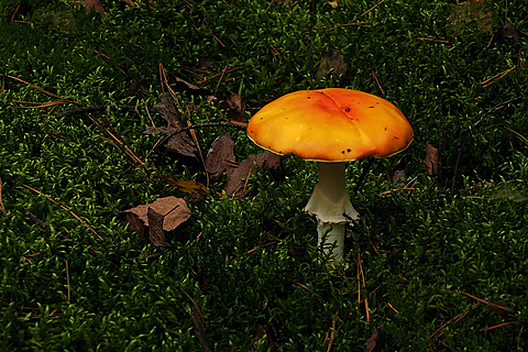
Olympus E-M1 II, MZD 12-100/4.0 Pro @47 mm |
|
Still, to say something on some of the new features (like the context-sensitive menu), we will have to wait until I actually put my hands on the camera. News from Godox: two more of their flash units are available in versions compatible with the Olympus/Panasonic TTL flash system:
There is also the new X1T-o wireless controller, opening up the whole Godox system to μFT cameras. My experience with the Godox TT350o unit was very positive, so I consider the new flashes a significant development. | |
|
The Olympus OM-D E-M10 Mark III is here. Just an hour ago I downloaded the promotional materials, including a brief write-up and a pile of pictures, and now I'm trying to figure things out.
This in an important development for Olympus and for Micro Four Thirds in general, as the camera is clearly aimed at photography enthusiasts on a budget and (in my opinion, at least) offers most for the money in this class. More on a subject later today, in a brief E-M10 III article I'm working on now. |
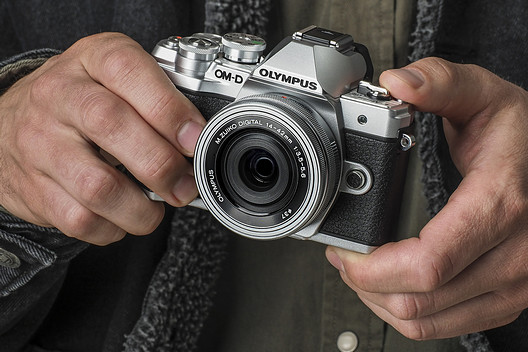
Promotional image © by Olympus, cropped and resized |
|
I've been in Poland for three weeks now, quite busy but still taking pictures with my two-lens This is a church in a small town, Kazimierz near Łódź. Nothing special, neogothic from early XX century, but the light was perfect, and the purple paint on brick walls quite unusual. The church was closed; I was shooting through a door grille, and some perspective correction in postprocessing was necessary — see the original frame (reduced in size, otherwise unchanged). |
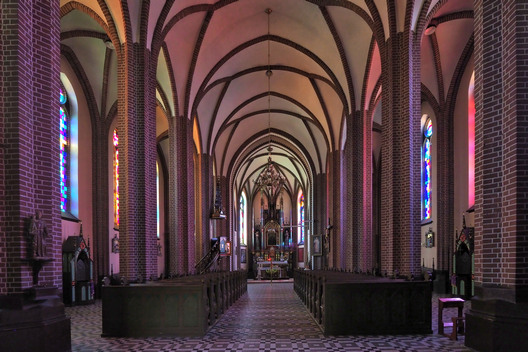
Olympus E-M1 II, Leica 8-18/2.8-4.0 at 8 mm |
|
Actually, I think the picture is better in monochrome: have a look. For more pictures of the church interior and exterior, see its Gallery page. The Biotar resurrection campaign on Kickstarter (see below) keeps steadily gaining momentum: at this moment the contributions exceed half a million dollars. In a somewhat surprising move, the organizers added another option to the package: the 58/2.0 version, quite popular as the "better standard" kit lens for Exaktas (read here; see also here and here). As much as I like the 58 mm Biotar, the extra $900 charged for this option is, to put it mildly, excessive. On one hand, it is much more common on the used-equipment market; on the other, much cheaper to make. I would recommend it — at a third of this price. | |
|
The lens in this picture is the Zeiss 75 mm F/1.5 Biotar of 1952, from my Exakta lens collection. Over the years I've been using it occasionally on Olympus Four Thirds or μFT bodies. (See here and here for more about it.)
A few days ago, thanks to a note at DPReview, I found a Kickstarter campaign aimed at resurrecting this lens.
"The Biotar 75/1.5 is probably the most legendary lens ever produced in Jena, Germany. [...] it has become one of the most expensive vintage lenses easily selling for over a thousand dollars � if you get a usable one. [...] Very few were actually produced but their quality was so outstanding that some are still in use today."
|
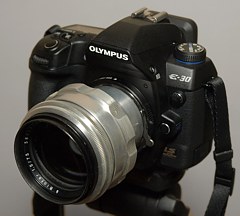
Shot with Olympus E-510, ZD 14-54/2.8-3.5 at 48 mm |
|
This statement on Kickstarter may not be quite impartial, but there is no doubt about the legendary status of this Biotar, deserved or not. I like it, but for actual picture-taking I prefer the 75/1.8 MZD by Olympus, with AF and auto aperture; the highest-ever rated μFT lens in the DXO database. The Kickstarter campaign was very successful: the initial goal of $75k was reached in just three days or so; as of this writing 420 people paid about $1000 apiece (plus VAT where applicable) to secure their Biotar (up from 405 last night). A Micro Four Thirds version has been confirmed, and so was the black finish option. If you really insist, you can reserve one with a serial number between 2 and 10 (three left as of this writing). It remains unclear how close the reincarnated version will be to the original. The creators drop hints like "[...] follow the legendary imaging abilities of the Biotar and gently change the mechanical design of the lens and reach a more modern but still classic design that pays respect to this legend" or "using modern glasses and hi-end coating"; the exact character and extent of changes is not specified. The two highly-respected German lens engineers involved have been associated with Leitz and "old" Meyer Optik Görlitz, while manufacturing will be done by Tokina in Japan. The originator of the project is the same entrepreneur who was behind the recent revival of Meyer Optik, offering contemporary versions of some classics from the golden era of German lens engineering, at prices more than matching the reputation (€1000-€3000). Is this a new trend (not to say a fad)? People are willing to part with some serious money in exchange for a lens designed half a century ago, with a promise of "swirly bokeh", "ability to tell stories", or to "express the magic in their images". All that without autofocus or even aperture coupling. But this is what I like in this development. The spirit. | |
|
Picture of the Week: this is why I had to put Photo on a back burner for a while. The picture shows how large and how complex is the U.S. air traffic at a selected moment of time (here: 8 AM EST). The East Coast up and running, California still waking up! |
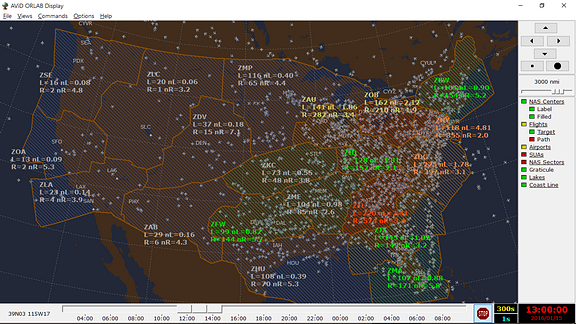
Image © 2017 Aerospace Engineering & Research Associates, Inc. | |
|
Just posted: Brief User Notes on μFT lenses, the eight I'm using on a regular basis, four of them outstanding, the others good enough. Close but no cigar: the BYOB 9 insert makes the Tenba DNA 8 bag a perfect solution for any two-lens E-M1 II outfit — as long as neither lens is longer than 90 mm. As my base kit includes the MZD 12-100 (116 mm long), I keep on looking. Still, check the bag capacity table for the details on what will fit into the bag with either insert version. | ||
|
Here it is: compact, good-looking and well-made, capable of holding any μFT body and almost any two μFT lenses (there are just four exceptions, lenses too big to fit in: two by Olympus and two by Panasonic). DNA 8 is the name of this small wonder. There is a catch, though. The bag offers padding on five sides (including the bottom) but not on the sixth (top). I would prefer to have that fixed. |
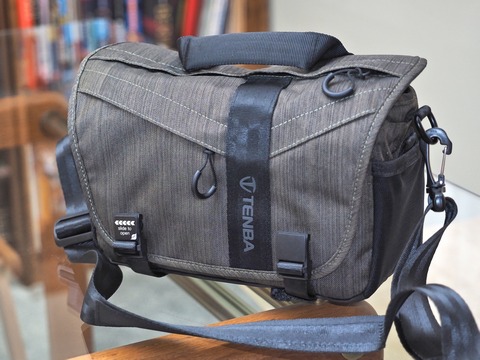
Olympus E-M1, MZD 12-40/2.8, hot-shoe and bounced slave flash | ||||||||||||
|
Tenba's own BYOB 9 (Bring Your Own Bag) is a bag insert compatible with the It took some tricky CSS coding, but the μFT Lens List now runs the count of lenses it knows about.
|
It is this time of the year again: I need a camera bag. Another one. This one will be for my High Grade Travel Kit, which includes the E-M1 Mk.II (574 g) and two lenses: MZD 12-100/4.0 Pro (561g) and Leica 8-18/2.8-4.0 (315g), plus a spare battery (74 g) and the mini-flash (51g). The carry-on weight thus becomes a manageable 1575g (3½lb), plus the bag itself.
(The E-PM2 backup body travels in checked-in luggage.) After some research on the B&H site, I found the smallest bag which may, but not necessarily will accommodate my outfit: the Tenba DNA 8. We will see later this week how it works. My μFT Lens List has been seriously updated. Unfortunately, all new lenses are in the Manual category. I would even say "very manual": not just lacking AF, but not even able to (1) identify themselves, or (2) pass aperture data to the camera, or (3) step down the aperture just before firing the shutter. Welcome to the 1950's!
|
I never thought that playing around with that Godox flash will be so much fun. I simply can't put the stupid thing away, and the eneloop batteries, recharged a few days ago, just wouldn't die.
| So last night I wrote another part (hopefully, the last one) for my TT350o report; this time about using it as an optical slave. That's where this picture comes from. By the way, I've seen this flash on Amazon yesterday, selling at $75. The world is going crazy.
| 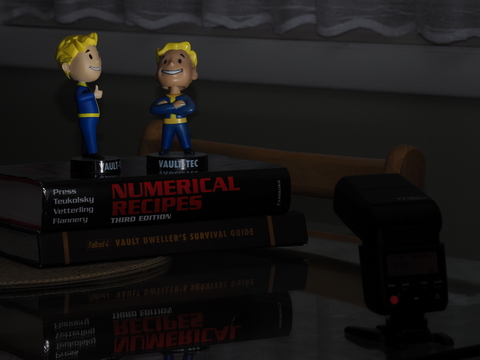
Olympus E-M1 II, MZD 12-100/4.0 Pro at 80 mm
| Another selling plug. Sooner or later you will want to have a nice, printed copy of your camera's manual. Try our British friends at camera-manual.com — they will be happy to do it at $20 or so apiece, including the spiral-bound option (which I really recommend). This takes about a week, including shipping to the States, which is not so bad. They did two manuals for me last February, and after five months of use I must say it was a quality job, worth a solid recommendation.
Picture of the week: local (?) craft, Maryland Eastern Shore. A few years ago, visiting an antique store in Grasonville, MD, my wife and I bought a small cabinet with this painting on the door. Norman Rockwell comes to mind. The only thing we were able to establish about it, was when it was made: around 1920, probably around here.
|
| 
Olympus E-M1 II, MZD 12-100/4.0 Pro at 41 mm
| The just-finished Godox TT350o flash report is not only about that piece of hardware: I ended up investigating some aspects of the Olympus TTL flash metering system. Learned more about it, too. And what about the flash itself? In short: a very good piece of equipment, which also happens to be cheap (price-wise only). I'm glad I bought it; a real find. Everybody should have one. Or two. | |||||
|
So, here is Godox, the brood of Godzilla... oops! While Godox is a great name for a Japanese horror movie monster, it really is a Chinese company, making (mostly) radio-controlled flashes.
As I rarely, if ever, use flash, and never used a radio-controlled system, I wasn't aware of company's existence, until The Day My Flash Died (see June 30). It looks like they have earned some reputation, mostly among remote flash users. Most importantly, the Olympus-compatible version of their TT350 unit, just released, sells at $84. The Olympus FL-600R, a successor and functional equivalent of my dead FL-36 is selling at $250. Same features, same Guide Number of 35 (m, ISO 100), three times the price. The flash arrived yesterday. Make and finish are impeccable (looks better live than in pictures). Compatibility with Olympus TTL (pre-flash) and FP (fast shutter) modes seems to be full. 100 frames shot, no problems yet. Pictured here: the Godox TT350o, mounted on the E-M1 with MZD 75/1.8 and matching thumbscrew hood by JJC. |
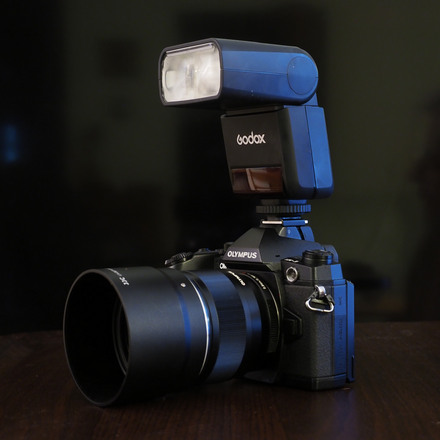
Olympus E-M1 Mk.II, MZD 12-40/2.8 @29 mm |
|
The Godox TT350o page I'm setting up now is, so far, a mere placeholder. I will keep adding to it bits an pieces. hoping that it will evolve into a full article one day. Showing an image alone in a Web browser (without the rest of the HTML page) seems like something simple and trivial, right? Wrong! Some browsers still don't get it right, after twenty years. In Best Browsers for Viewing Pictures I'm comparing seven major Windows browsers from this angle, and also giving a plug for my general-use favorite, | |
|
Another Picture of the Week: this guy, just learning how to fly, lived in my patio for two days, supervised by his parents. I was able to go outside only after they left.
Another addition to the Leica DG 8-18/2.8-4.0 Lens Report — a part on vignetting. I wasn't planning to do that (fixed in software, chapter closed), but there is more to it than meets the eye. And another: how well is lens distortion corrected in viewfinder image? Now we know: to the same degree as in camera-generated JPEGs. Quite impressive, considering that the camera has to do it 120 times per second. |

Olympus E-M1, MZD 75-300/4.8-6.3 at 215 mm |
|
My old FL-36 flash unit, working just fine with OM-D cameras, died: the plastic ring, securing the foot to the hot shoe, broke in half. Making it from a better composite would have cost Olympus five cents more; from metal, perhaps ten cents. As I don't like the price tags on current Olympus units, I've ordered one made by (or for) Godox, just released in the Olympus/Panasonic version. We will see how that works.
| New article: Olympus Pen E Cameras — a brief compendium of basic information on all thirteen models released since 2009 in three distinct tiers: E-P, E-PL, and E-PM. Now, is it possible that, with the last year's arrival of the (very attractive and not much bigger) Pen F, this line lost the reason to exist? (After 2013, we've seen only two releases.) More additions and touch-ups to the Leica DG 8-18/2.8-4.0 Lens Report — new sections on chromatic aberration and effective focal length. Picture of the Week: Chesapeake Bay Environmental Center (what an ugly name for a pretty place!) near Grasonville, MD. |
|
The soft, brighter patches in the sky (visible only on some monitors) are an artifact of image stitching, showing up when the sky has an azimuthal gradient. MS ICE usually handles these easily, but not this time. | |||||||||||
|
The Leica DG 8-18/2.8-4.0 Lens Report took more time than I expected.
First of all, two large sets of image samples: Crofton Lake and Bookshelf, then more digging into the matter of geometric distortion, expanding that section a lot and moving it from the sample page into the report itself. Can you imagine that this lens (at 8mm) creates images with distortion of -8%? Then the in-camera processing will reduce it to -1.6%, and then, an optional function in postprocessing may bring it to zero (not always!). Very ingenious, and freeing some of the design variables allows for better handling of other aberrations. The lens itself is quite amazing — the same league as the premium Olympus Pro-series glass. I'm just unable to tell at this moment if it is a tad behind or a tad ahead, or dead even. I may have to do a three-sided comparison involving both the 12-40 and 12-100 Pro zooms, all at 14 mm, using the 80-MP High Res mode. |
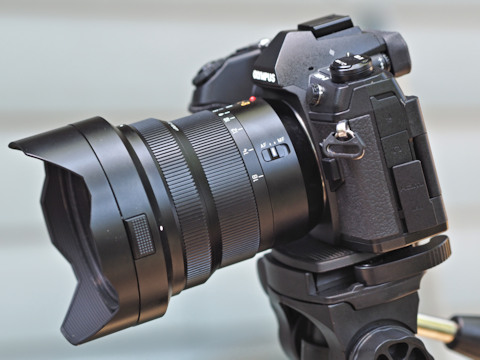
Shot with: Olympus E-M1, MZD 75/1.8 | ||||||||||
|
Just out: Image Samples: Crofton Lake — the first piece dealing with the new Leica DG 8-18/2.8-4.0 Vario-Elmarit from Panasonic.
Late night update: I've just added a small section on geometric distortion to the lens article. It turns out that there are two functions to alleviate that problem.
This is a fascinating, but also controversial, topic. I hope to revisit it soon in a more civilized manner.
Oh, yes. This is one good lens. I've spent a better part of the afternoon with it, and I can already tell it delivers.
| The first image samples I've put my hands on (at 8 mm), show no improvement in detail between F/2.8 and F/4 when viewed 1:1 pixel scale, center and corners. In a lesser lens we would see a a difference. (After switching to 2:1 or 3:1 magnification, I could see some. Still, a very promising first impression.) I've checked this by switching between images while preserving magnification and position, which is a quite efficient technique of detecting differences between almost-identical images, used in astronomy until quite recently. So, now I'm sitting on the first batch of image samples from the Leica DG 8-18/2.8-4.0 lens and my E-M1 II; I should have at least some posted by tomorrow.
| 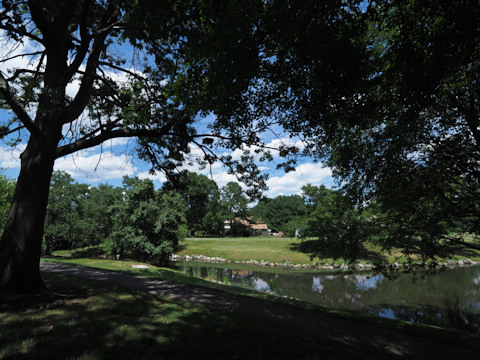
Olympus E-M1 II, Leica DG 8-18/2.8-4.0 lens @8 mm
| In the meantime, briefly: well made (like the MZD 75/1.8, a bit larger), smooth controls, composite outer barrel, locking lens hood. Corners not affected by a 4.5 mm thick filter ring. Length unchanged by zooming or focusing. AF as expected (checked also on the E-M5 and E-PM2). More tomorrow.
What you see at the right is a composite of eight frames, differing only in shutter/aperture combination used. This was a three-in-one project.
| First, I needed image samples showing the performance of the MZD 75/1.8 over the full aperture range. Second, I wanted to show, in one picture, how DoF changes with aperture, for my Depth of Field article, to enliven it a bit. Third, I badly needed to restock from some of my favorite microbreweries.
| .tt.jpg)
Olympus E-M1 II, MZD 75/1.8
| Technical Data:
All of them worth trying, camera optional. I was quite excited about the Lumix G Leica DG Vario-Elmarit Professional Lens, 8-18mm, F2.8-4.0 Asph. (what a catchy name!) and a bit disappointed when it failed to materialize in the end of May. Last Wednesday, however, B&H already had the lens in stock, and I hope to have some image samples posted and analyzed over the weekend. Update: The UPS truck came exactly during my two-hour trip to the office. They left a nice note saying they will try again on the next weekday, which probably means Monday. That day, however, I have to be out of home for another three hours, so probably I won't see the lens either. If UPS persists, I have a 50/50 or better chance on Tuesday — not bad for express shipping.
Taking a break from the E-M1 II, I did what I've been doing every two years or so since year 2000 — updating my Depth of Field article.
| This year's new topic is Pixel-Peeper's DoF, with the CoC diameter (a measure of acceptable unsharpness) set to just 2 pixels (or rather pixel pitch units). For a 20MP μFT sensor this is .0067 mm or 10 wavelengths of deep-red light. Compare this to .015 mm, traditionally used. Which of these two values makes sense? Well, they both do. With a computer screen, we have two viewing models: the classic, full-image one, and another, with screen being a viewport, moving around the image in higher magnification, zooming in and out again. The second model is more demanding in terms of both DoF and lens performance. Pixel-peeping is going mainstream.
| 
Picture of the Week: my wife's best friends.
Olympus E-M1, MZD 12-40/2.8 Pro at 40 mm | |||
|
Another DoF development: my Doffy application for Windows, capable of generating DoF tables as HTML pages, is now packaged, documented, and can be downloaded.
Picture of the Week: the Golden Gate Bridge; that's how it looked in the Nineties, at least.
| Customizing the E-M1 Mk.II — done! At least the first, rough version. At 224 kB of handwritten, tight HTML, this is now the largest document at this site, and I'm still expecting it to grow. Importantly, over a month spent working on it, I learned (and un-learned) quite a few things about this camera. My new, customized control layout is, I think, better after some tweaks, and it can be now installed from a downloadable file. At the same time I've updated the E-M1 II Cheat Sheet to stay in tune with the article.
| 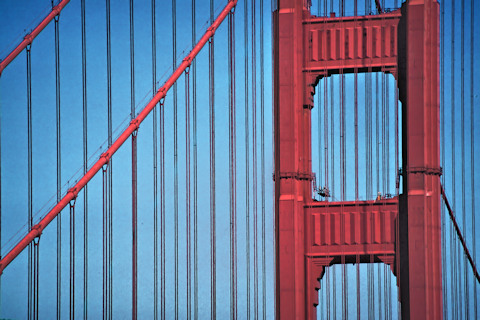
Minolta XD-5, lens unknown | |
|
News from Japan: the Camera Journal Press Club awarded its two (out of four) Camera Grand Prix awards, Camera of the Year and Readers Award, to the E-M1 Mk.II, while the MZD 12-100/4.0 Pro lens got the Lens of the Year title. The fourth trophy, Editors Award went to Nikon D500.
I'm posting Olympus Art Filters, Part 2, showing examples of these filters applied to a landscape. Nothing impressive (maybe with one exception) and quite unpredictable. Expect Customizing the E-M1 Mk.II is steadily progressing, about 70% done — measured by number of topics (or menu options). |
d-c2.tf.jpg)
Olympus E-M1 Mk.II with MZD 12-100/4.0 Pro @50mm
|
|
| |
|
I just had a closer look at the Olympus Art Filters. They did not change much since the last time I looked, back in 2009.
The Olympus Art Filters project (Part 1) consisted of two steps. First, I did a shot of my laptop desk, using it to generate 14 additional images, one for each filter. The second step was the same, but the shot was strongly de-focused. Basically, I was photographing bokeh. This went through the filters again, to produce a series of wallpapers. This is a random process, with quite unpredictable results. 20% or so of the resulting images are keepers, the rest goes to trash. |

Olympus E-M1 Mk.II with MZD 12-40/2.8 Pro @26mm
|
|
Some serious progress, again, on the E-M1 Mk.II customization article. Most notably, the part on re-assigning all those buttons and wheels is done. I have to take a break for a few days: there are people willing to pay money for reciprocal square complexity metrics around Denver Airport, and I invented it (the metrics, not the airport). If you use the word "reciprocal" in a name, you can charge twice as much. "Double-double-exponential" is even better, although rare. | |
|
Picture of the Week:
Last year the chipmunk who lives under my house brought home a girlfriend. Now I have two cute, blond chipmunk babies taking over the patio, ignoring my presence. What next?
New article posted: I'm also investigating how much more detail can these larger images provide, compared to the 50MP HR ones. Don't hold your breath. |

Olympus E-M1 II, MZD 75-300/4.8-6.7 @300mm |
|
I'm back from Poland. Can you imagine we had snow there? In May? I won't even mention the packs of hungry polar bears, roaming the streets. Yeah, that's what you have to watch out for while out there.
Before leaving back for the States, I managed to have two panorama-shooting sessions with the E-M1 Mk.II. The second one used the High Res Mode. Stitching eight HRM images (80 megapixels each) into one panorama will result in an image just over 500 MP in size and 65,000 pixels wide. Wow. | |
|
Yes, you've heard me right: The picture you see when you click on the miniature version above is not the actual ½ GP panorama; it has been scaled down to 30% (linear) size, or 45 megapixels (just 9 MB, compressed), to be more browser-friendly. To see the real thing, 65,000 pixels wide, in all its crazy-detail beauty, you have to download the image file (78 MB, see the link below), and use an image viewer (get the free FastStone now, if you don't have it, and thank me later). The new article: Insane Panoramas (A First Cut) describes my efforts, techniques, and results of producing panoramic images from frames shot both in the standard camera resolution (applicable to all cameras) and in the Olympus High Res Mode (E-M1 Mk.II only). I still consider it a work in progress, and plan to keep adding new contents. Will keep you posted.
| Picture of the Week: Manufaktura in Łódź, Poland (pronounced "woodzh"), where I am now, visiting family. Manufaktura is a 19th century textile factory, converted into a modern shopping and entertainment complex. An update to the E-M1 Mk.II customization article includes, among others, the convoluted but very useful subject of AE and AF locks. The Mighty Midget: the tiny Lumix G II 20/1.7 lens produces images with as much detail as the MZD 12-100/4.0 PRO, as my newest image samples show.
| 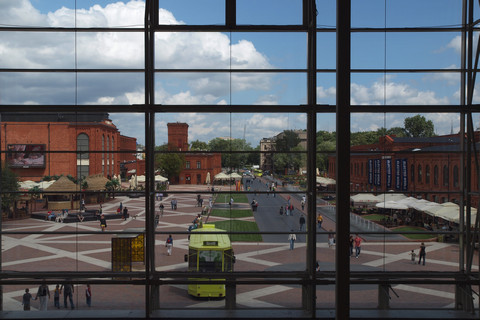
Olympus E-620, ZD 12-60/2.8-4.0 @20 mm
|
A new Gallery page of old pictures: Bryce Canyon, Utah, shot in 1993 on Kodachrome slide film.
| After 20 years, the film was scanned in India (!) by Scan Caf� into 6MP JPEG files. Most of the scans were fairly bad: huge contrast, ugly grain, and more. Still, after some postprocessing they turned out quite presentable. And yes, 6 MP is more than enough for images captured on 35-mm film.
| 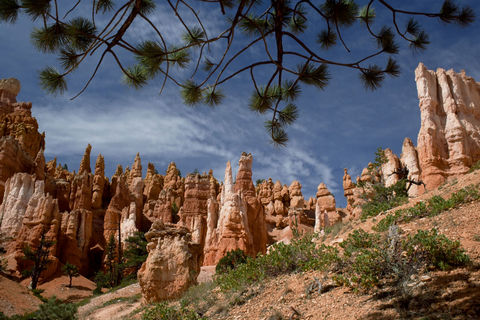
Minolta XD-5 with (probably) Tokina 28 mm F/2.8 lens | ||
|
The long-promised Customizing the E-M1 Mk.II is (slowly) progressing. The first part, dealing, among others, with Picture Modes, is already quite complete and presentable, so I am posting the work in progress, as it may already be of some use for Mk.II owners.
This will take another month or close, so please be patient. In the meantime, I will be updating the WiP version.
Just posted: E-M1 Mk.II Lens Fest, Part 2, with more Mark II image samples, taken with seven MZD lenses.
| While Part 1 used my traditional lakeside scene, this one was shot indoors, in a controlled environment, and presents a bookshelf. As this subject contains less of fine detail, it is easier on non-premium lenses, while still delivering lots of information, some of it quite unexpected. As before, the main article contains links to pages with samples for individual lenses. These are still missing textual contents; I expect to have that done within another day or two.
| 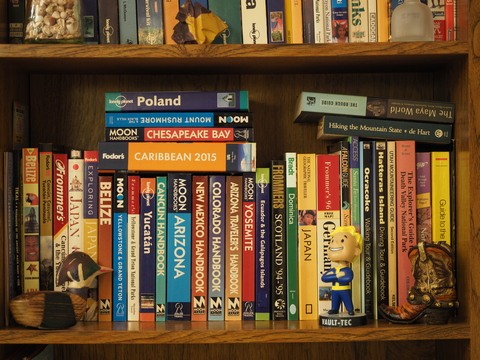
Olympus E-M1 Mk.II, MZD 12-40/2.8 PRO @40mm
Yet another sample collection:
Real-life E-M1 Image Samples using MZD 75-300/4.8-6.7 is the source of this prairie dog picture.
| My Olympus OM-D hubs was becoming quite messy; I had to rearrange the sections and links, especially image sample ones. I hope it is better now. Panasonic has announced a new μFT lens: Leica DG Vario-Elmarit 8-18/2.8-4.0 wide zoom. In addition to expected optical quality, what makes it so attractive is accepting front filters. Weight is also important: just 315 g. Full specifications can be found in my μFT Lens List. The lens should be available in the US late May at about $1100.
| 
Olympus E-M1, 75-300/4.8-6.7 @300mm
| |
|
A new, small Gallery page: The Devil's Tower, shows pictures taken with the E-M1 and two lenses: the 12-40/2.8 PRO and the 75-300/4.8-6.7 (original, not Version II).
The former turned out to be a great landscape lens of superior quality; the latter — an affordable and carryable long telephoto, good enough (at least!) for what I'm doing. The picture was shot handheld from a distance estimated as about 470 m (1500 ft). |
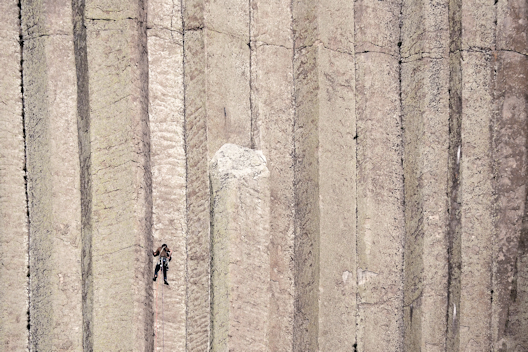
Olympus OM-D E-M1 with MZD 75-300/4.8-6.7 @300mm
|
|
This was computed as D = HF/PS. where
The result will be in the same units in which H is given. | |||||||||||||||||||||||
|
Greetings from Poland! Baltimore to London, then Helsinki, then Warsaw, and finally a car ride to my old home town of Łódź — rather too much for one day.
Having brought along the E-M1 II with the 12-100/4.0 PRO and 75/1.8, now I clearly see this camera is a bit heavy for me, for travel at least. A good pretext to get the Pen F when it gets updated. I tried the Pen recently and I really like it. It does 99% of things I need, and has the best controls I've seen on a digital camera yet. Picture of the Week: Bread. The only thing I'm missing in the U.S. The first day after arrival I got three loaves at a food artisan market. |
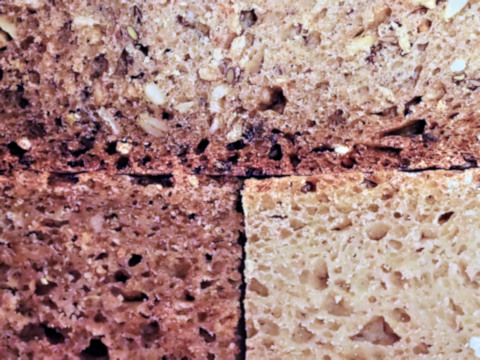
EM-1 Mk.II, MZD 12-100/4.0 at 75 mm
| ||||||||||||||||||||||
|
The E-M1 Mk.II in Infrared article got an update: noise removal using Neat Image. While the plugin does a very nice job, I still prefer my IR pictures with some noise, the way I get them from the Mk.II at ISO 6400 or even higher.
In a few hours I'm leaving for Poland (again!), where I'll be staying a full month. I decided to take the E-M1 Mk.II along. At first I was planning to go with just one lens, the 12-100 mm PRO, but I am very tempted to bring the 75/1.8, too, even if I never use it.
| Instead of packing, I've spent most of Sunday play-working on the E-M1 Mk.II Infrared report. Yes, it's done. No surprises: the camera needs about 1000× (or 10 EV) more exposure in IR than in visible light. The results can be, however, very nice. And with the new sensor/engine combo, the amount of noise in IR images at ISO 6400 is just about right. With a good Internet access, I will be able to keep adding stuff to these pages, so stay tuned.
| 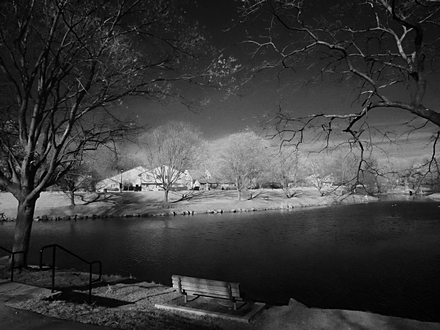
EM-1 Mk.II, 12-40/2.8 PRO lens at 12 mm, Hoya R72 filter
|
Picture of the Week: No, it's not the Crofton Lake; it is somewhere in Yellowstone, almost as pretty.
| The E-M1 Mk.II Lens Image Samples article was expanded. I've added three more lenses, each with its own sample page: MZD 12-50/3.5-6.3 EZ, MZD 40-150/4.0-5.6, and ZD 50/2.0 Macro. The last one is not a μFT lens, but I treat is as such. Its AF system works just fine with both E-M1 bodies, and the resolution is one of the best around. The main piece got a number of new side-by-side comparisons, plus some other additions and corrections.
| 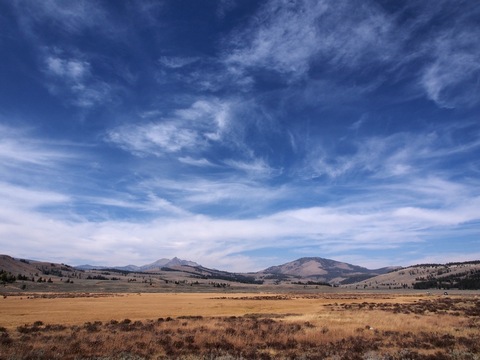
Olympus E-M5 with MZD 12-50/3.5-6.3 @12mm
|
Yes, that's the Crofton Lake again. And you know what it means: every time it shows up, I have a bunch of comparative image samples to share with my fellow pixel-peepers!
| While I'm not a pixel-peeper myself, some of my best friends are, and if I had a daughter, I wouldn't mind her bringing one for dinner, maybe even marrying him. I've shot all these samples with one camera, the E-M1 Mk.II, using five different MZD lenses, all in one session. For every lens used three or four focal lengths (if it was a zoom) and a sequence of aperture values up to F/11 (higher values are rather useless because of diffraction). The house in the middle was the principal subject, and the fence to the left of the tree trunk was the AF target, about 105 meters (just below 350 ft) away from the camera.
| 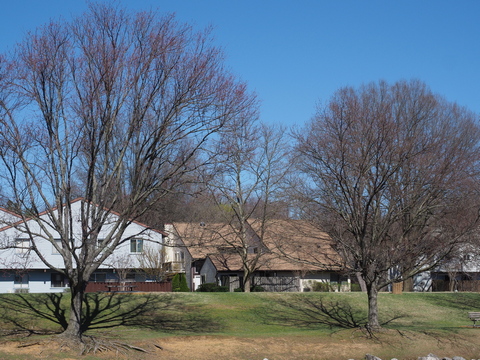
Olympus E-M1, MZD 12-40/3.8 PRO @40mm
|
Here is the main article: E-M1 Mk.II Lens Image Samples — a brief summary, comments, some comparisons, but no image samples for individual lenses. These have been packaged into five individual pages:
The image at the right is a full-scale (1:1) fragment of an HR Mode image from the Olympus E-M1 Mk. II camera.
|
I just posted a full report on the subject: Olympus The sample shown links to the full 50MP image. One night I spent a whole hour just looking at it, mesmerized, enjoying the detail, ink texture, half-tones in the near-white paper and more. This time Olympus impressed me for real. The whole picture, viewed in the same scale, would be 4.25 times wider than your HD monitor, which makes the detail you see just astounding.
| 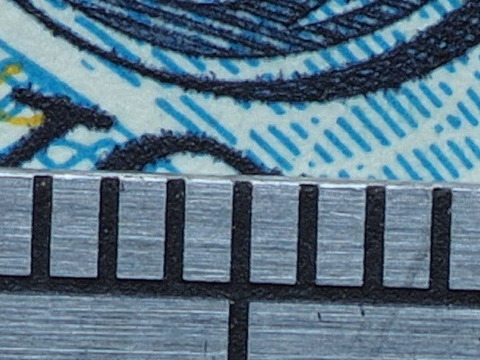
Olympus OM-D E-M1 Mk.II, legacy ZD 50/2.0 Macro lens
|
This is not a technique for everyday photography. It requires a lens with great resolution, a static subject, a firm tripod and some patience. But when it works, the experience can be very rewarding, even if the results are hard to see in a print or screen display under normal conditions.
I believe this lens is not getting the appreciation it deserves: the MZD 75-300/4.8-6.7 is one of the very few long telephoto lenses for Micro Four Thirds and, in proper hands, it will deliver most enjoyable results.
| To make a point, here is a new report: E-M5 Real-Life Image Samples Using the MZD 75-300. True, you can get better results with the 300 mm F/4 IS PRO — at three times the weight, twice the size, and five times the price. This makes the 75-300 "the long tele for the rest of us". The Panasonic 100-300/4.0-5.6 G (now in Version II) seems also attractive, with a half-stop advantage in aperture, but I believe is a tad behind optically. Still, worth a try. Some of the same images, after post-processing, ended up in a new Gallery page: Maryland Renaissance Festival II. Have a look.
| 
Olympus E-M5 with MZD 75-300/4.8-6.7 @300mm
|
Isn't this March? In Maryland? So why do I have this view from my bedroom window? And why isn't all this melting? Something is very wrong here.
| My patio gate is frozen shut, so I won't be going out much the next two days or so. I am stocked, though: half a pizza, two cans of chili, five sixpacks from Duclaw. Not bad. It turned out that the Noise Filtering and Sharpness... report, posted just yesterday, was very slow loading from the server, with all those images embedded. Splitting it into four parts helped.
| 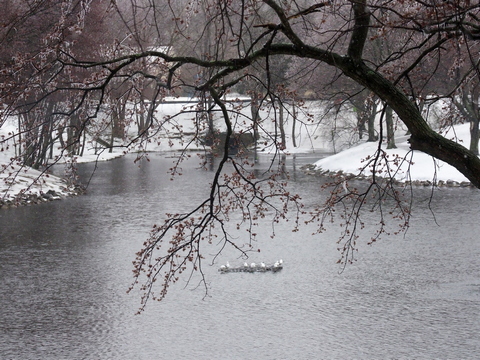
Olympus E-M1 Mk.II with 12-100/4.0 IS PRO lens at 75 mm
| ||||||
|
A major effort, Noise Filtering and Sharpness in the E-M1 Mk.II is done. At last. 480 image samples and tens of hours of scrutinizing them, to find the combination of these parameters providing "best" in-camera JPEGs — from the angle of detail loss, image noise and sharpening artifacts. As your "best" may be different than mine, the samples are packaged for download, so you may inspect them and reach your own conclusions.
Picture of the Week: a morning street scene in Paris, 1981.
| Only going through scans of my old slides and negatives, I realize how much easier is it to get technically good results with digital than it was with film. At that time, I was shooting Kodachrome whenever I could (it was unavailable behind the Iron Curtain). otherwise — the infamous East-German ORWOChrome. Once I tried the Russian CO-series reversible film, to never try it again, so bad it was,
| 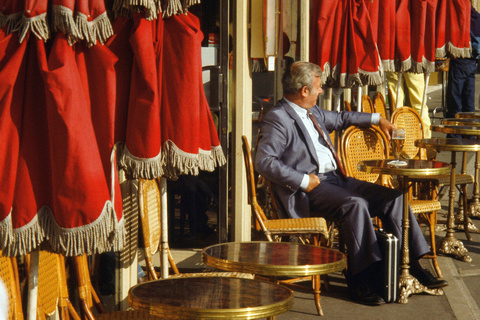
Minolta XD-5 with a 50/1.7 Rokkor
| |
|
This is Olympus Capture, running on my Windows 10 laptop, hooked to a TV. This program is very handy for tethered studio sessions; fixing a few, relatively minor, design issues would make it a champ. It is certainly way better-behaved than OI Share.
I am using Capture now for huge sets of image samples with various combinations of image parameters in the |
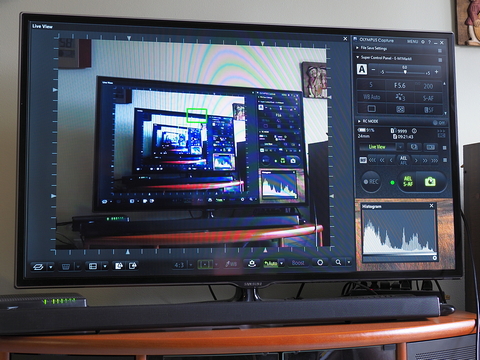
Olympus E-M1 II, MZD 12-100/4.0 IS PRO @24 mm
|
|
Old news: The four-thirds.org site (sorry, one of the worst Web sites I've seen in a long time; navigating around it is a nightmare!) just posted the 2017 Lens Catalog. While it includes mostly Micro Four Thirds lenses, it also has a (non-Micro) Four Thirds page, with a finest-print line saying "Production of all ZUIKO DIGITAL Four Thirds lenses has been discontinued". Well, thanks for the heads-up, how else would we know?
My μFT Lens List has been updated: it now lists (separately) MF lenses. In addition to four F/.95 Nocton lenses by Voigtl�nder (really: Cosina), it includes four by Kowa, a well-established Japanese company, virtually unknown outside of the industrial and medical market. Kowa lenses are not yet available at U.S. retailers. There are also two new AF lenses on the list, both from a Chinese company called Yi (better known as a maker of action cams). These lenses are offered with Yi's entry-level μFT camera, the M1, released a few months ago. Time will show if the μFT camera market will get a third player, which would be nice. | |
|
The end of an era. Sad news: the Popular Photography magazine just announced that their most recent (March/April) issue was the last one. Ever. Three days after I got it in the mail. Some signs were there for the last dozen years or so: penmanship and expertise levels declining, critical opinions suppressed, and catering to the widest, mass-market audience. Everything so lukewarm, so routine. (All this in addition to general decline of printed media, of course.) Popular Photography was born in 1937, the same year as its major competitor, Modern Photography (originally Minicam). The latter, catering to more literate and demanding audience, was a better publication (under leadership of Herbert Keppler) — I know, subscribing to both since 1981. As it often happens in a mass market, the better magazine went out of business, merging (?) into Pop Photo in 1989.
For years, the remaining bright spot was the witty, informed and educational SLR column by Facing problems after the digital revolution, the owners found a cure: changing the name to Popular Photography & Imaging, only to revert to the original a couple of years later.
| Still, Pop Photo continued to be an institution, and I enjoyed spending an evening with a new issue every month. I'm sure I am not the only one feeling sad about its demise. Here is the shot of the last cover (home delivery version; retail runs had different covers, usually a camera). You may still be able to find this issue on a newsstand, as a keepsake.
By chance, the last issue includes a Lab Test of the Olympus The E-M1 Mk.II scores very high in the Pop Photo report, earning an Excellent image quality rating (whatever that means) at ISO 64 to 800.
The cover: shot from hand, diffused daylight
| 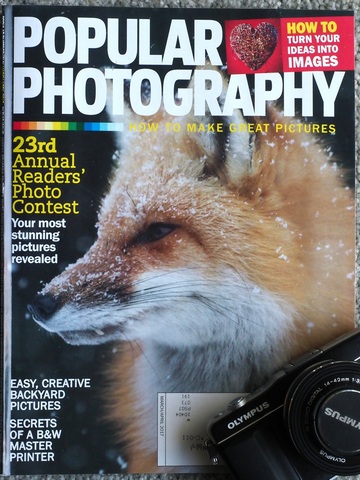
| |
|
After a month spent, almost full-time, with E-M1 Mk.II, I'm — at last! — done with the first cut of its first write-up: Olympus E-M1: What's New in Mk.II. Working on it, I've learned a lot about this camera and its predecessor. I'm afraid the full, in-depth report will take even longer, but 2you will see it here when it is done, or even earlier. Picture of the Week: Eroded walls of an ancient Hisor Fort in Tajikistan, not far from Afghan border (mid-Seventies) This is one of my slides shot on East-German ORWOChrom UT21 film and recently scanned by ScanCafe to 6 MP. |
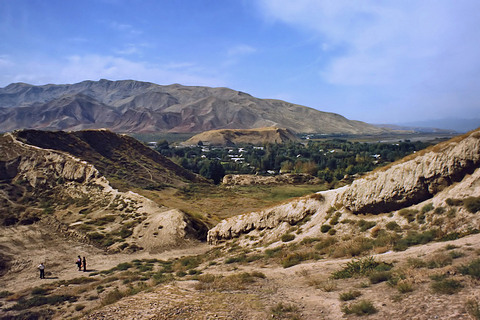
Camera: Russian Start SLR, 58/2.0 Helios-44 |
|
Updated E-M1 Mk.II Image Detail and Noise at Various ISO — re-shot the Pencil Box sample series with default parameter settings, added more analysis and some conclusions. Now it is done (?).
Added a companion piece to the above: E-M1 Mk.II and Mk.I Compared at High ISO, and the results are not quite what I expected! | |
|
Two more MZD lenses have been added to the With the latter lens, the IS performance is by 1 EV better on Mark II than on the original. Picture of the Week: Devil's Tower, Wyoming |
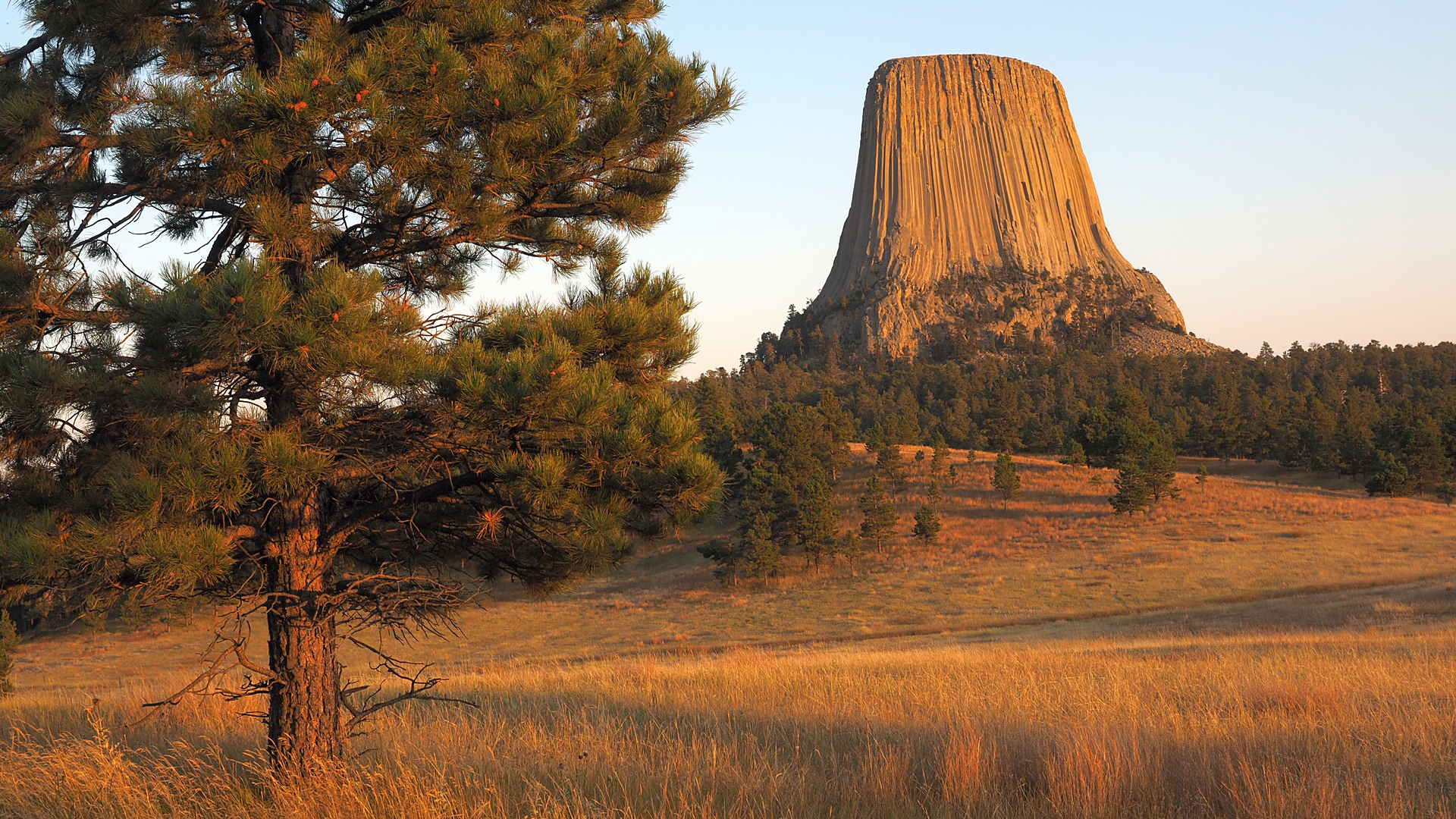
Olympus OM-D E-M1 with
MZD 12-40/2.8 ED PRO at 21 mm |
|
I've checked the IS effects of the MZD 12-40/2.8 PRO lens @40mm on the E-M1 Mk.II. Surprisingly, the results are very close to those for the 12-100/4.o IS PRO at 35 mm, dual IS of the latter notwithstanding. See the I also updated the original E-M1 IS report, adding the 12-100/4.0 IS PRO at 100 mm. Yes, the in-lens IS seems to be helping on the older camera, but less than on the new one. Actually, I'm quite amazed how attractive the original E-M1 still is three year after release. If you have this camera and are itching about Mark II — don't (unless you badly need one of the new features, but think twice). Instead, spend this money on one (or better two) of those wonderful, new lenses. Today I'm posting Image Stabilization in Olympus E-M1 Mk.II, done with the MZD 12-100/4.0 IS PRO lens. No, I don't see the touted 6.5 EV handholding benefit of the dual IS system, but I do see the still most impressive IS effect of 4.3 EV. I'm still having quality time with the E-M1 Mk.II, lately trying to find some use for the Fn lever, about which I have very mixed feeling. It goes again so many user interface design principles, that it could be used in a handbook case study. Oh, well, I'll have to learn how to live with it.
In the meantime, I went back to the project started some time ago — the list of μFT lenses. Lo and behold — it is done! So far I am limiting it to lenses with autofocus (sorry, Voigtl�nder!). Disregarding cosmetic updates, it now has 61 entries, mostly from Olympus and Panasonic, just three by Sigma and one from Tamron.
| Shown: cross-section of the new MZD 8 mm F/1.8 Fisheye, the next lens I want to play with. Can you imagine that just 60 years ago optics was designed (computed) by hand?
| 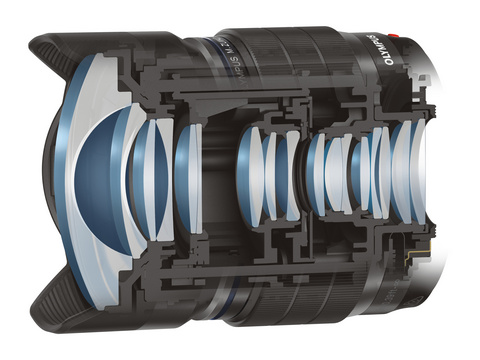
(Image by Olympus) | |
|
Have a look then at my Micro Four Thirds Lenses article; it may come handy as a reference — or just a conversation item. Interestingly, the two most expensive lenses on the old Four Thirds list were $8000 (300-800/5.6 Sigma) and $7000 (300/2.8 Olympus ZD). The μFT community seems frugal in comparison: top two prices are $2500 (Olympus MZD 300/4.0) and $1800 (Panasonic/Leica Vario-Elmar 100-400/4.0-6.3). The good news for those who invested in that costly FT glass is that those lenses will autofocus on the E-M1 (original or Mark II) exactly like they used to on FT (phase-detection) cameras, not worse (used with the FT->μFT adapter, of course). A neat feature of the E-M1, which I never found time to play with, is Live Monitor allowing you to check the progress of exposure being under way and stop it when you think the image is ready (i.e. got enough light). Now I want to try this out on the Mark II. To work confidently with long exposures, however, I need to know more about camera's dark noise.
| This is why I spent the last two days collecting dark noise samples, scrutinizing them, preparing for presentation, and writing the report: Dark Noise in the E-M1 Mk.II. You're welcome. While this may be of interest only to those who do (or want to do) long-exposure photography, especially at higher ISO settings, I'm happy to report that Mark II improves quite a lot in this area compared to the original E-M1 (which was not a push-over, either). Have a look. Picture of the Week: Mount Rushmore, South Dakota. Shot from about 3.3 km (2 mi) away.
| 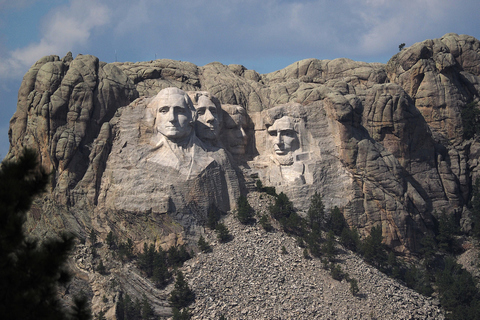
Olympus OM-D E-M1, ZD 75-300/4.8-6.7 @300mm
| |
|
| |||||
|
Well, I'm back. For some time at least. I'm retired now, so now I hope to have enough time to bring these pages back up to speed. Last time I came back from a hiatus, the direct reason was the arrival of perhaps the best camera I have used so far — the mirror-less OM-D E-M1 by Olympus. I've been using it since, enjoying the experience and results. Last December the E-M1 Mark II was released. I've been using and learning it for the last two weeks. Another good reason to emerge from inactivity. I am now extensively testing the camera (or rather checking it up, not having any lab facilities), so expect a number of related write-ups. In the meantime, however, a quick note. |
.t.jpg)
The E-M1 Mark II, shown with the new | ||||
|
The new model looks, feels, and behaves very much like the original (which is a good thing). It could be easily dismissed as a minor upgrade of its predecessor. A closer check, however, will show that many things have been changed, and most of the changes (at least those I'm aware of) are for the better. (The others are a matter of personal taste.)
While preserving the control layout, Olympus re-sculpted the whole body (it also became a bit larger and heavier). On the other extreme, the firmware, and the new TruePic VIII imaging engine in particular, has been strongly reworked. Olympus claims significant improvements in autofocus (especially tracking), image stabilization, serial rate, and noise control at high ISO. Some of these claims I was able to verify; for others, I have to take manufacturer's word. There are also dozens of smaller (but also appreciated) quality-of-life improvements. The mode dial, after years of my bitching, got three custom preset positions, and the menu system has been somewhat improved (even if it is still quite bad). Some of the performance and image-processing progress was made possible, as Olympus says, by more computing power aboard. Mark II runs on two processors, four cores each. Its processing capability has increased 3.5 times compared to the older model. (We don't know how this was measured, or how it compares with other cameras.) While I am still writing a piece comparing Mark II with the original, I already went through all of camera's settings, so I'm posting the first version of my E-M1 Mk.II Setup Cheat Sheet as a possible starting point for your own custom setup. The full article, with discussion of specific parameters and rationale behind suggested values should, hopefully, follow soon.
| To decide on image processing choices, I had to run a number of series of image samples, some of which may be worth showing here. The first of sample-based articles is done: E-M1 Mk.II Image Detail and Noise at Various ISO. Here is one of sample images, shot at ISO 25,600. Click on the thumbnail to see the unaltered off-camera JPEG. Not too shabby; for conclusions see the article. Note the shallow depth of field provided by this lens at F/1.8. Only the two pencil tips in the center are in focus. I like this lens.
| 
Olympus OM-D E-M1 Mk.II with MZD 75/1.8 ED lens
| | ||
 |
 |
 |
 |
 |
 |
 |
| Home: wrotniak.net | Search this site | Change font size |
|
Posted 2006/01/30; last updated 2018/01/01
|
Copyright © 2006-2017 by J. Andrzej Wrotniak
|